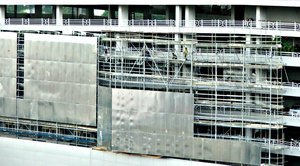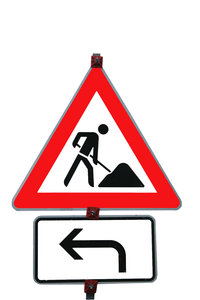A lot of us spend a good part of our day at work. This means that it’s just as important to practice crime prevention in the workplace just as we would at our home or in our neighborhood.
Regardless of where you work, whether it’s at an auto shop, a store, a restaurant, a corporate headquarters, a person’s home or anywhere else, there’s a simple and common sense ways to make the workplace safer for all.

The owner or supervisor of your workplace is obligated to make workplace safety and violence prevention a priority. They need to be on the lookout for fraud, shoplifting, vandalism and potential violent conflicts.
They also have to make sure that employees are safe from those not allowed on the property and customers who may be “upset.” Employers have to be careful when hiring a new employee, making sure to get a background check and various references, according to the National Crime Prevention Council. Every single company, regardless of size and industry, should have an emergency plan in place.
Our Quincy workers’ compensation lawyers understand that violence doesn’t make news until it makes news in a big way — such as a workplace shooting with multiple fatalities. However, employees can also be victimized by other crimes, like theft or sexual assault. It’s important to make sure that all employers understand what’s going on in the workplace and that the proper steps are being taken to help to minimize the risks of workplace violence.
There are simple things that you can do at work to help to minimize your risks of any kind of assault, violence, theft or other work incident. A good start is to make sure that you keep your purse, your keys, your wallet and all other valuables with you or locked in a safe place at all times.
It’s important for employers to make sure that they know who is on their property at all times. Non-employees should be checked in at an office or with a manager. If you see someone you don’t know or someone who makes you uncomfortable, talk to management or security immediately.
Be cautious when coming in early or staying late. You never want to wander the premise alone. Always practice the buddy system. If you don’t have a “buddy” ask a security guard to escort you to your car or to your bus stop.
Lighting is an important safety issue, too! If you notice any lights that are flickering or that aren’t working or any broken windows or doors, report them immediately.
You should also report any signs of violence that you may witness at work. This includes any acts of sexual harassment.
Does your workplace have an emergency play? It should and you should know it! If your workplace doesn’t have such a plan, volunteer to help create one. This emergency plan should include a first-aid kit and evacuation readiness. It’s not a bad idea to keep your own emergency supplies near your work area, too.
Continue reading
 Massachusetts Workers Compensation Lawyers Blog
Massachusetts Workers Compensation Lawyers Blog










